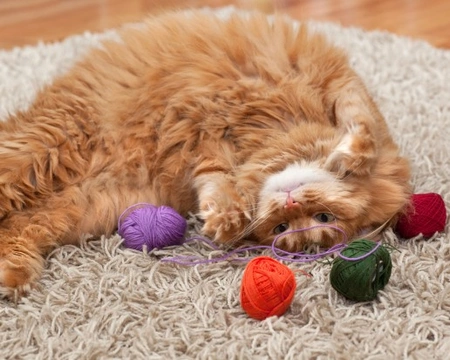
Keeping indoor cats happy when they are alone
Cats are generally very self-sufficient creatures that often appear to not pay much mind to the comings and goings of their owners, sometimes going as far as seeming to ignore their owners when they are in! Nevertheless, cats do have strong social needs, such as the need for companionship and the need to be entertained, and if your cat does not have access to the outside world, it is important to ensure that all of these needs are met.
Indoor-only cats are reliant solely on you, their owner, for all of their needs, from the basics such as food and toileting provision, to being entertained and kept happy. If you keep an indoor-only cat, this article will help you to ensure that none of their needs are being overlooked.
Separation anxiety
If your cat feels that they are not getting enough attention or that they are left on their own for longer than they are happy with, they may begin to display the signs of separation anxiety. This can come in many different forms, but all of them are intended to let you know that something is amiss, and can provide an indication that all is not well with your cat.
Out-of-character behaviour or destructive behaviours are often indicative of loneliness and separation anxiety, such as scent marking within the home, going to the toilet outside of the litter box, or urinating on your belongings. Excessive grooming or pulling out their own fur is another indication of an unhappy cat. If your cat is very clingy and will not let you do anything on your own when you are home, or if they are very demanding and vocal, particularly when you leave the house, your cat is probably lonely, and you should seek to address this.
Meeting your cat’s need for routine
Cats thrive on routine, and can become stressed when things happen erratically or outside of their usual schedule, and this is particularly true for indoor-only cats that are confined within four walls. Try to ensure that everything about the way that you care for your indoor-only cat is consistent.
Feed them at the same times each day, and in the same place, clean the litter box regularly and do not move it around, and try to ensure that you don’t leave your cat alone for prolonged periods of time. If you work, try to return home at around the same time every day, so that your cat knows when to expect you.
Keeping your cat entertained
The indoor-only cat’s opportunities for play and keeping themselves entertained are naturally much more curtailed than the range of opportunities that are available to cats that can go outside. So regardless of the age of your cat, it is vital to provide plenty of toys and other opportunities for your cat to play. Scratching posts, activity centres, catnip toys, interactive toys, puzzles, games that decant a treat, and lots of chances to explore things within the home can all help to keep your cat entertained.
Ensure that your cat can sit and look out of at least one window, and try to make it a window with an interesting view- perhaps placing bird feeders within sight of the window!
When you are at home, schedule some time to spend playing with your cat and enabling their games, giving them quality time to get involved in play and simulated hunting behaviours and whatever else your cat enjoys. Change their toys regularly to avoid them becoming bored, and find out what your cat’s favourites are!
Affection and attention
Understandably, you should spend plenty of time just providing companionship for your cat as well, allowing them to sit with you, petting them and generally making them the centre of attention. Grooming your indoor-only cat is a good bonding experience, and something that your cat will come to look forwards to.
Some ideas to consider
One cat living alone is much more likely to suffer from boredom and separation anxiety than two cats kept together, so could you consider getting a second cat as a companion for your indoor cat? While it is certainly true that not all cats are amenable to the idea of having a friend, when properly introduced, cats will usually come to tolerate each other and in some cases, form strong bonds of their own. If you are considering getting a second cat, it is important not to do this if your cat is displaying signs of separation anxiety or is otherwise stressed, as this might exacerbate the issue.
If your cat cannot go outside unsupervised, might you be able to consider enclosing your garden for your cat to go out into, or building a run or enclosure within your garden? Failing this, might your cat be willing to learn to walk out on a collar and lead to give them the chance to get a taste of the outside world? Remember that indoor-only cats are likely to be more sedentary than cats that go out, and so providing opportunities for exercise is also important, and some form of supervised access to the outside world can help with this too.



